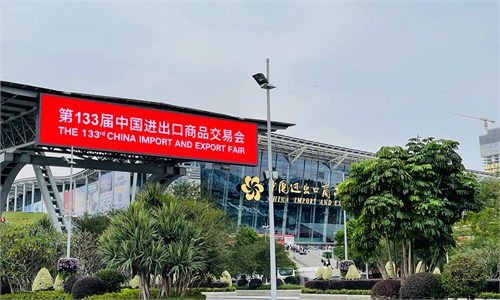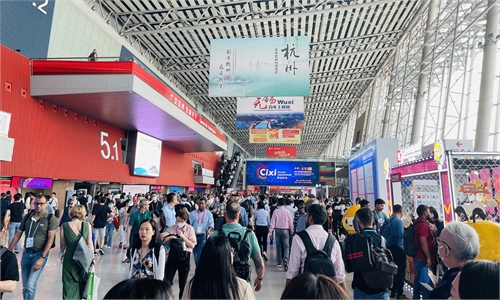Chinese exporters’ resilience, industry chain advantages seen from Canton Fair sessions: journalist observation
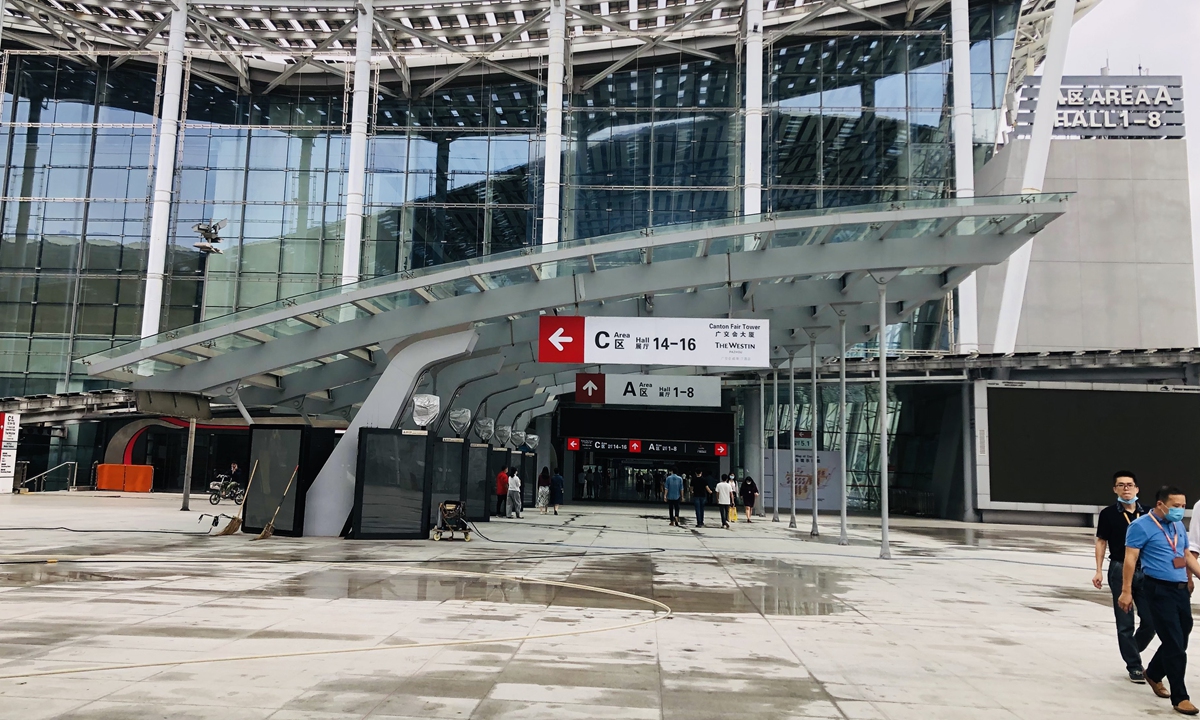
Photo taken on October 14, 2020 shows the entrance to exhibition area A of the Canton Fair. The 128th session was held totally online. Photo: Chi Jingyi/GT
After waiting for more than one hour on Saturday, the first day of the 133rd session of the Canton Fair, the Global Times reporter finally entered into the exhibition hall with thousands of exhibitors and buyers from all over the world.
It was hard to imagine the pomp in the past three years when the Canton Fair was almost entirely held online.
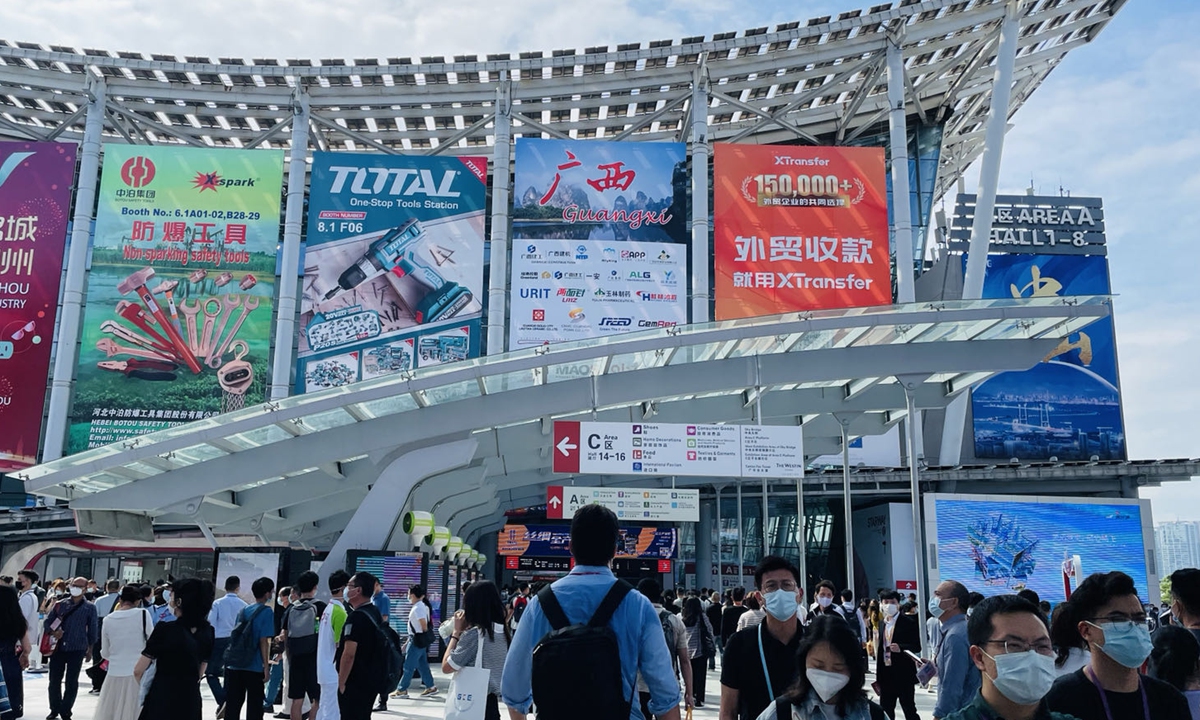
Photo taken on October 17, 2021 shows the entrance to exhibition area A of the Canton Fair. The 130th session was partly on-site, with 7,795 exhibitors participating on-site and 26,000 enterprises online. Photo: Chi Jingyi/GT
Many Chinese and overseas exhibitors said that the crowd was far beyond their expectations. Although everyone had to walk cheek by jowl, which exhausted them, exhibitors enjoyed it anyway as they could boost their sales.Several exhibitors told reporter that they had signed deals with overseas buyers on the very first day of thee Canton Fair, with one receiving a total of more than $2 million in purchase orders. Behind the scale of transactions was the trust in China's manufacturing and technology from global businessmen.
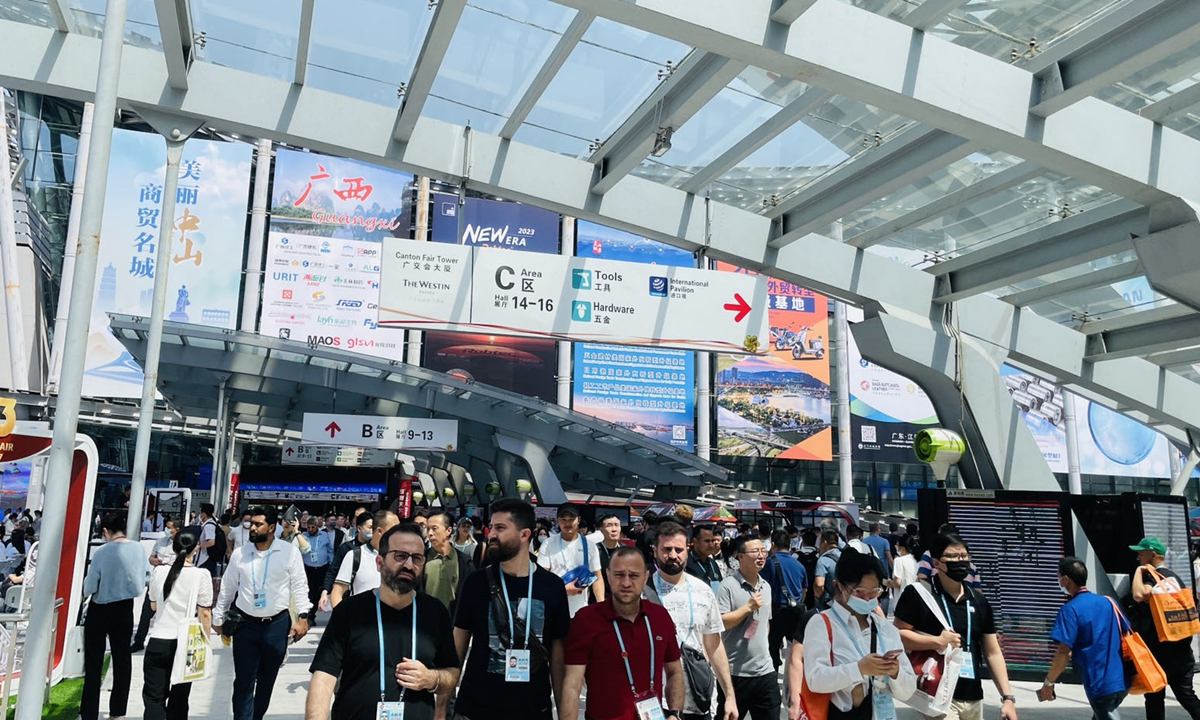
Photo taken on April 16, 2023 shows the entrance to exhibition area A of the Canton Fair. The 133rd session was fully on-site, with 34,933 exhibitors participating on-site. Photo: Chi Jingyi/GT
As a three-session participant of the Canton Fair - fully online, partly on-site and fully on-site ¬- I was impressed by the resilience, flexibility and efficiency of China's manufacturing and exporting enterprises, as well as all-round efforts by the government, which can explain why China's foreign trade has maintained growth and reached record highs, even during the epidemic.The 128th session held in October 2020 was my first participation in the trade event. Although exhibition halls were so empty that the echoes of your footsteps could be clearly heard, the Canton Fair was busy online, seen from huge data flows shown on displays in the command center of the China Foreign Trade Center, the organizer.
The 127th session, the first one after the outbreak of COVID-19, was delayed to June from April 2020. In just two months, an online platform was set up for global exhibitors and buyers. Such groundbreaking efforts provided a high-quality solution for trade fairs around the world.
As the exhibition hall was empty, I visited the factories of two export enterprises on the outskirts of Guangzhou, South China's Guangdong Province and found that production lines were still running.
Several enterprises told me that they planned to increase production lines as exports surged, which surprised them. They attributed the growth to the cloud functions of the fair, such as virtual reality product displays, livestreaming and instant online chats.
But the root was that production in other countries was at a standstill amid the pandemic, while Chinese exports supplied the world, which showed the resilience of China's supply chain.
Things began to change in October 2021, at the 130th session of the fair. It was the first one that enabled on-site exhibits since 2020, while keeping the online exhibitions. Almost all the booths in the exhibition halls were fully booked.
Buyers shuttled back and forth in a hurry, carrying exhibitors' catalogues and business cards with their suitcases. The resumption of on-site exhibitions injected confidence among exporters.
However, it was not until 133rd Canton Fair this month that I really experienced the immense foreign trade event. Many of the frequent attendees said that the number of participants this session was even higher than before the epidemic, which made them confident about this year's exports. Some enterprises said they expect overseas sales to double in 2023 on a yearly basis.
Many exhibitors and buyers say it's important to come to the Canton Fair to get deals done, but it's more important to look at industry trends. Chinese products and technologies are being updated and iterated very fast and are now leading the world.
China's strong and complete supply chains enable its enterprises to customize their products to meet the demand of global buyers, designed and manufactured in a very short time, which does not work in other countries, exhibitors noted.
Therefore, many Chinese exporters said they are not worried about the so-called industry chain shift, because China's manufacturing advantage cannot be replaced.
